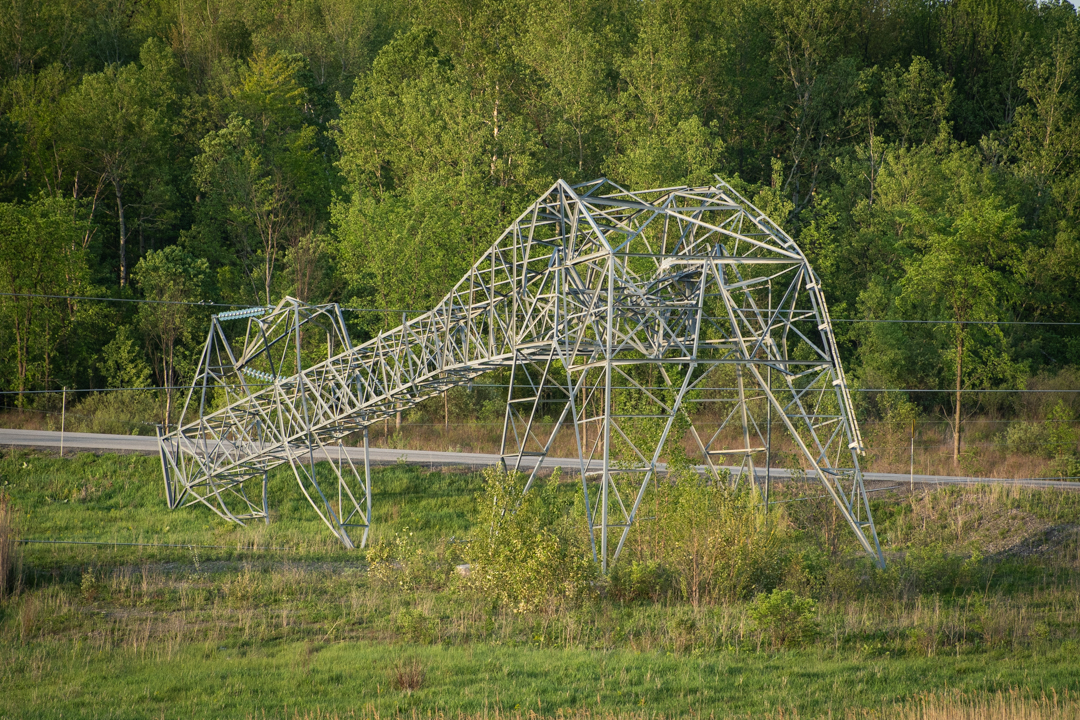Halloween is all about spooky surprises, but the real fright lies in what’s happening to our planet due to climate change. From extreme weather to rising energy demand, climate change is having a chilling impact on our environment and the way we power our lives.
Ottawa has experienced multiple examples of extreme weather incidents in recent years, including tornadoes, ice storms, flooding and heatwaves. These climate-driven occurrences are becoming more frequent and have the potential to cause widespread and prolonged power outages.
Here are some ghoulish realities of climate change, particularly its impact on the energy and utility sector—and what we’re doing to help.
Community impact and the need for emergency preparedness
It’s not just a ghost story. Climate change is amplifying the frequency and intensity of extreme weather events that can significantly disrupt daily life, affect critical services, and pose serious health and safety risks to our community.
In other parts of the world, extended winter outages have led to hypothermia and frostbite, while scorching heat waves can cause heat stroke and exhaustion. In 2023, Canada faced record-breaking wildfires, fuelled by unprecedented high temperatures and widespread drought conditions. These increasingly intense wildfires are not only destroying electrical infrastructure and natural habitats but also displacing communities and worsening air quality that can cause severe respiratory issues.
Hydro Ottawa recognizes the urgency of climate challenges and is committed to both strengthening our emergency response capabilities and empowering our customers to be emergency ready. We encourage everyone to have a plan in place for communication, food, water, and medical needs to ensure you can weather an extended power outage for up to 72 hours. By knowing the risks in your community, staying informed about weather and outage alerts, and taking proactive steps to be prepared, customers can minimize the impact when emergencies arise.
April 2023, spring ice storm
Vulnerability of infrastructure and rising operation costs
With severe weather becoming more common, the cost of climate change for Canada’s infrastructure maintenance, repairs and upgrades continues to rise. Much like a haunted house standing strong against supernatural forces, our infrastructure is being put to the test. Many of Ottawa’s existing electricity infrastructure, such as overhead power lines, were not designed to withstand the increasing severity of climate-related events. This increases the likelihood of damage, creates safety hazards, and disrupts service delivery.
As the impacts of a changing climate continue to affect our lives, the resiliency of our city’s electricity system is critical. Additionally, the transition to cleaner energy sources, driven by new regulations, also requires substantial investment. Utilities are investing in new technologies to both withstand extreme weather and meet regulatory demands for reducing carbon emissions, all of which can affect energy prices for consumers.
At Hydro Ottawa, we are using the valuable insights gained from past weather events to enhance our resilience. This includes modernizing our distribution infrastructure, adapting our planning and construction practices, and integrating climate considerations into our long-term strategies. We are also taking specific steps to mitigate climate impact on the grid, such as reviewing design elements, strengthening poles, and strategically burying overhead lines in high-risk areas. These measures will allow us to build back stronger and reduce the impact of future weather events.


Rising temperatures mean rising energy demand
As global temperatures rise, so does the demand for electricity. Just like trick-or-treaters eagerly flock to the streets on Halloween night, extreme heat drives everyone to crank up their air conditioning, while folks turn up their heat during deep freezes. This type of surge in demand during peak times can strain the system, leading to potential outages. Thankfully we are meeting this challenge head on with our own electric expansion.
This escalating energy demand is prompting a push for electrification to meet the Government of Canada’s net-zero goals, signaling a significant transformation for the grid. By 2050, it is expected that twice as much electricity will be required compared to today. To meet this growing demand for electricity, Canada’s generation capacity will need to double or even triple, while our renewable energy generation must increase tenfold.
To help manage energy use during peak times, various programs and incentives are available to help customers reduce their consumption and carbon footprint. Hydro Ottawa is also ensuring the grid can dynamically respond to increasing energy needs from sources such as heat pumps, electric vehicles, and solar generation.
Threats to renewable energy sources and energy security
While renewable energy is essential for reducing carbon emissions, climate change can be a real fright for the reliability of these sources. For instance, extreme weather can damage solar panels and wind turbines, while prolonged droughts can limit hydroelectric generation across Canada. This can result in less excess energy being available to sell in wholesale markets, and the need to import other sources of power to meet customers' requirements. On the flip side, when severe weather brings flooding instead of drought, the impact on energy infrastructure can be just as disruptive. In Ottawa, for example, flooding in 2017 and 2019 forced us to temporarily shut down our hydroelectric operations at Chaudière Falls for the first two times in over a century. These disruptions highlight the challenges climate change poses to both energy production and resource availability.
Luckily, the electricity grid is evolving to become smarter and more flexible to accommodate renewable energy sources. Hydro Ottawa continues to invest in a diverse portfolio of clean energy projects, including solar and energy storage, and smart grid technologies that will help integrate more renewable energy into the provincial supply mix.

Whether it’s a storm, a heatwave, or something that goes bump in the night, Hydro Ottawa is ensuring climate change is considered in all its decision-making practices to ensure reliable power for the future.